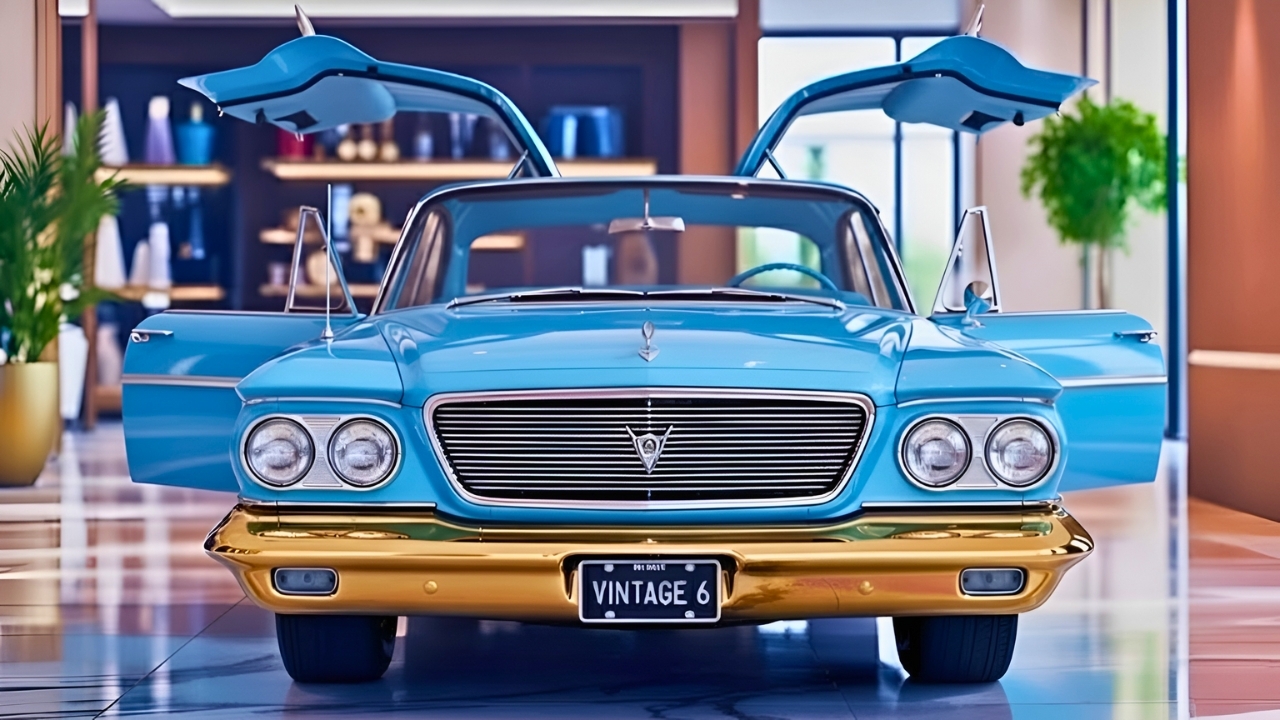The 1963 Chrysler 300J is one of those rare automobiles that sits quietly in the pages of history, yet its influence on American performance and luxury remains undeniable. While it never achieved the mainstream fame of the Chrysler 300 letter cars before it, the 300J represented a unique blend of prestige, muscle, and grand touring comfort. It captured the spirit of a time when American carmakers were pushing boundaries in design, engineering, and driving experience. The 300J may be forgotten by many today, but its story reflects the evolution of Chrysler’s ambition to build powerful luxury cars with character and style.
What is the design identity that sets the 1963 Chrysler 300J apart
The 1963 Chrysler 300J carries the unmistakable personality of Chrysler’s letter-series heritage, but with its own subtle distinction. It retained the long, sweeping body lines and the confident, wide stance that defined American full-size cars of the era. The front fascia featured a clean, authoritative look with its large grille, quad headlights, and balanced chrome accents. The sculpted hood added a touch of sportiness, hinting at the power underneath.
Its fastback-style roofline, sloping gracefully toward the rear, gave the 300J a refined yet dynamic appearance. While the earlier 300H and 300G had more aggressive styling cues, the 300J leaned slightly toward elegance. The taillights were set into a smooth, rounded rear section that made the car look cohesive and polished from every angle. With its blend of muscular proportions and luxury details, the car stood as a symbol of Chrysler’s vision for a refined performance machine.
What is the interior experience offered by the 300J cabin
Step inside the 300J, and the cabin immediately wraps you in a sense of upscale comfort. Chrysler gave the interior a premium focus, using high-quality materials, sophisticated textures, and attention to detail that placed it closer to European grand tourers than typical American cruisers. The bucket seats were designed to be supportive for long-distance driving, while the dashboard layout showcased Chrysler’s modernist approach to interior styling.
The cockpit was driver-oriented, with clear gauges, elegant trim pieces, and a center console that enhanced the sporty feeling of the car. The 300J also featured amenities that were impressive for its time, including power accessories and advanced instrumentation. It was a car designed for travelers who wanted power without sacrificing comfort, making it a standout in the early 1960s luxury performance segment.
How the engine and performance define the 300J character
Performance was at the heart of the 300J, even if it was not the quickest in the letter-series lineup. The car came equipped with the legendary 413-cubic-inch Wedge V8 engine, producing strong horsepower and smooth torque delivery. It was paired with a TorqueFlite automatic transmission that provided reliable shifts and a refined driving experience.
The 300J wasn’t a drag-strip monster, but rather a highway performer designed to deliver effortless power at high speeds. Its engineering focus was on long-distance cruising, stability, and a balance between performance and sophistication. The suspension tuning offered a comfortable ride without losing the firmness necessary to handle curves with confidence. For drivers seeking a luxury car that could also deliver powerful acceleration, the 300J offered a satisfying balance that few competitors matched at the time.
When the 1963 Chrysler 300J made its mark on American automotive culture
Although the 300J did not achieve high production numbers or widespread popularity, its influence was significant in shaping Chrysler’s performance legacy. It arrived at a moment when American drivers were becoming increasingly interested in powerful cars that also offered comfort, style, and road presence. The 300J demonstrated Chrysler’s dedication to creating a true luxury muscle machine before the term was even widely used.
Its limited sales have contributed to its status as a rare collectible today. Enthusiasts appreciate the 300J for its unique design cues, strong engine, and the spirit of innovation it represented during an era when automakers were experimenting with new ideas. While overshadowed by other cars of the time, the 300J quietly contributed to the evolution of American grand touring performance cars.
How the 300J compares to other Chrysler letter-series cars
Comparing the 300J to earlier models in the letter-series lineup reveals how Chrysler shifted its focus slightly during the early 1960s. The 300C, 300F, and 300G were more aggressive in styling and performance personality. By contrast, the 300J struck a middle ground, emphasizing refined luxury over pure speed. This didn’t diminish its importance; instead, it showcased Chrysler’s ability to adapt the 300 formula to changing consumer tastes.
The 300J introduced updates that hinted at the brand’s future direction. The styling was smoother, the interior more elegant, and the overall driving experience leaned toward long-distance comfort. It served as a transitional model, bridging the gap between raw performance and the more sophisticated grand touring style that would influence later American luxury vehicles.
What is the legacy of the 1963 Chrysler 300J today
Today, the 300J holds a special place in automotive history as a rare and often overlooked classic. Collectors appreciate its combination of bold styling, refined craftsmanship, and the unmistakable presence of the 413 V8. It represents an era when Chrysler wasn’t afraid to push boundaries and pursue high-end performance with a luxurious touch.
Though not as famous as some of its predecessors, the 300J remains a significant chapter in the story of American luxury muscle cars. Its legacy lives on in modern Chrysler 300 models that continue the tradition of blending comfort, power, and elegance. For enthusiasts who value authenticity and the charm of early 1960s engineering, the 300J stands as a rewarding and memorable piece of automotive heritage.




